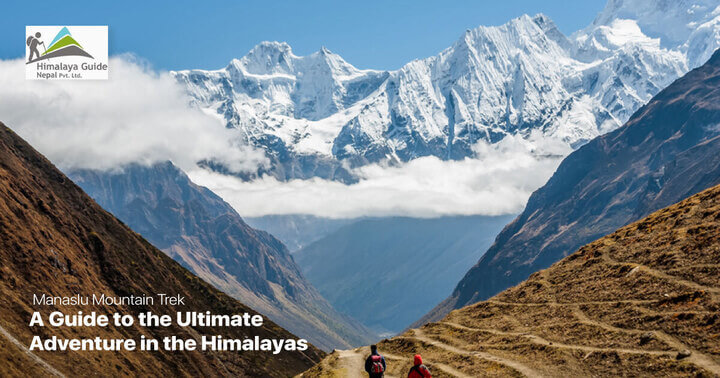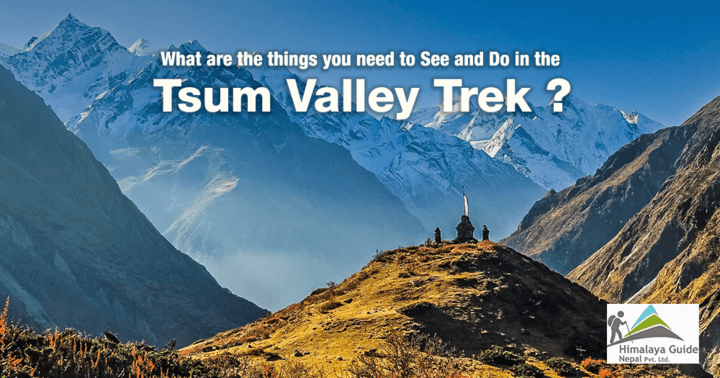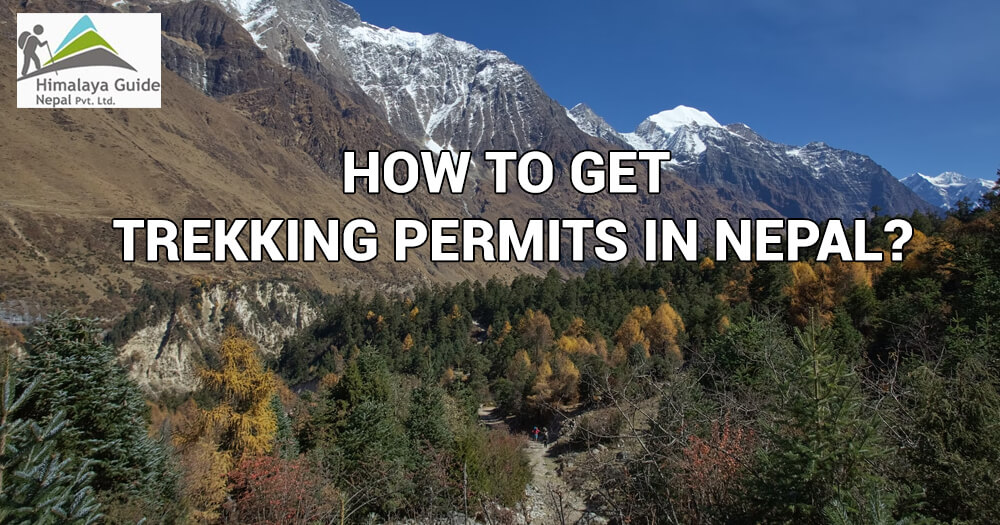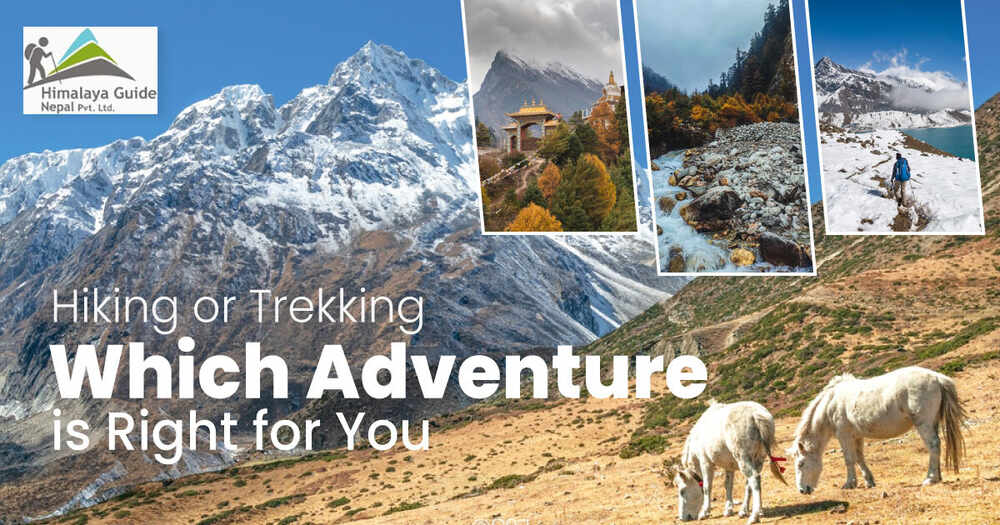Introduction
Are you looking for a thrilling trek in Nepal? Then Manaslu Mountain Trek would be perfect for you and recently it is getting popular among locals and tourists. It is located in the Gorkha district and surrounded by the beautiful HImalayas, providing trekkers unforgettable experience and journey. This trek is loaded with different mountains, landscapes, and rich cultural experiences. In this further article, we will examine why the Manaslu Mountain Trek is a great option for you and also we will look at the different things you need to know before going to this trek.
Why choose the Manaslu Mountain Trek?
There are many reasons that sets Manaslu Mountain Trek different then the other trekking destinations. The main reason would be that it has an untouched nature. As this trekking destination was opened back in 1991 for tourists and this region has preserved its natural beauty. While going on this trek, you may not see crowded trails like in poon hill, mustang and so on, therefore you can enjoy the beautiful sceneries in peace and connect with nature.
Likewise, another important reason would be the cultural diversity of Manaslu. On the way, you will see different ethnic communities, mostly Tamangs, Gurungs, and Sherpas. You will have the opportunity to know more about the local culture, daily life of people and old monasteries which have been preserved for many years. Also, you will be blessed with the warm welcome of the local people.
Moreover, while you are on trek, Larkya La Pass will grab your attention as it has a staggering altitude of 5,160 meters (16,930 feet). This trek might be difficult but it will give you a lifetime memory filled with snow-covered mountains, amazing landscapes and more. Manaslu is at 8,163 meters which would be 26,781 ft, and once you have completed this trek it will give you accomplishment conquering one of the most difficult treks in Nepal.
Trekking permits and regulations
If you are planning to go for Manaslu Mountain Trek, then there are certain rules and regulations that you need to follow. These rules are regulations made to ensure sustainable tourism and to reduce the different impact that can be made by foreigners in the environment and local communities.
First thing is to get a Restricted Area Permit (RAP) and a Annapurna Conservation Area Permit (ACAP) so that you are good to go for the trekking. As for 2023, it might cost you USD 70 or more, so it is better to consult with your agency. Likewise, make sure you select that registered trekking agency and have a professional guide. With a good guide it will help you in many ways like for your safety and share different information regarding the area’s history, geography, and culture.
Best time to trek the Manaslu Mountain
In order to have a safe journey in Manaslu Mountain Trek a best time needs to be considered. The best time to visit would be spring and autumn. During these periods you can expect the best weather with temperatures being not so cold or hot. So there won’t be any heavy rainfalls or snow falls, which makes an enjoyable journey with the beautiful Himalayas scenery.
Similarly, in these trekking seasons that route will be dry and clear, so trekkers don’t have to worry about the slippery paths and landslides. This not only provides safety for trekkers but also makes for a memorable experience with the amazing views without any hindrances.
Furthermore, trek during springtime is surrounded with the beautiful blooming flowers. Trekkers will see full grown rhododendrons flowers (Nepal national flower). Fields are covered with the wildflowers that make an amazing view, giving a trekkers magical touch and also a chance to take pictures of nature. Whereas, trekking in autumn shows a distinct type of beauty, as there will be a little bit of snow capped mountains. With the peaks covered with the snow, combined with the sky’s deep blue provides amazing views. It gives them a reminder of the elegance of the Himalayas.
Training and physical preparation for the trek
In order to enjoy and successfully complete the Manaslu Mountain Trek, trekkers need to be mentally and physically fit, and also need to prepare for the trek. Having early preparation would be a huge benefit for trekkers to complete it. The type of preparation you can do is jogging or short hiking as it will help you with the stamina and trekkers need to focus more on cardiovascular exercises. These types of activities will support your muscles and joints for the lengthy trek. Likewise, yoga and other flexibility activities will improve your movement in the complex situation.
Highlights and attractions along the Manaslu Mountain Trek
There are alot of attractions in Manaslu Mountain that sets apart for the other trekking destination. From subtropical lowlands through rural regions near the Tibetan border and onto the area of glacial peaks, the walk travels through a variety of scenery. Trekkers will go through the Larkya La Pass, with an altitude of 5,106 meters and are rewarded with breathtaking panoramic vistas of Himalayas that appear to continue indefinitely in every direction , with the recognizable Mount Manaslu.Moreover, different local communities all over and knowing more about their culture will connect them with local people. Trekkers are given a warm welcome by friendly locals in different villages like Smagaon and Samdo and share the history about Mount Manaslu, culture and daily activities. Similarly, the historic monasteries across the way provide religious reflections and peaceful times. Also, you will be witnessing the small villages which have traditional building structures. Finally, for most of the trek, the Budhi Gandaki River will be on your side which will make your journey even better.
Accommodation and facilities during the trek
Manaslu Mountain Trek offers a variety of accommodations to suit different priorities and budgets. There are tea houses or guesthouses along the trails where you can stay while visiting the Manaslu Mountains. These teahouses are simple yet elegant accommodations that offer travelers a place to stay and eat. The following are some of the important details of the trip and accommodation.
- Tea Houses: Tea houses are the most common and popular accommodation found in Manaslu Mountain trekking. These tearooms are normally located in villages or alongside main footpaths. Simple rooms with two wooden beds are provided in each room. The features of tea houses can vary, but they generally provide a comfortable place to relax and recharge yourself for the following day.
- Food: You will find different types of food easily in these tea houses. The selection might be basics but healthy, with a main focus on local Nepali cuisine. You can try dishes like dal bhat (rice and lentils), momo (dumplings), and noodle soup. Reduce your risk of foodborne illness by sticking to vegan varieties.
- Facilities: Basic yet walker-friendly amenities are available in the tearooms. Some restrooms provide extra features like Wi-Fi, phone service, and hot water, however these may incur an extra fee. It is significant to remember that each tea establishment may have a different assortment of these goods available.
- Sleeping arrangements: Teahouse rooms typically include two wood beds and are shared by two people. Either carry your personal sleeping bag or ask for an extra blanket. Because temperatures might drop dramatically at higher altitudes.
- Electricity: While most tea rooms have electricity, it can be limited and accessible only during certain hours. There are electrical charging points for gadgets, but it’s a good idea to have a power bank with you just in case.
Safety tips and precautions for the Manaslu Mountain Trek
- Altitude Sickness: To prevent altitude sickness, accommodations are crucial. Letting your body get used to the rising altitude requires taking breaks and traveling with caution.
- Hiking permit: Ensure that you have the necessary hiking permit and are traveling with a qualified person. Your safety and compliance to local laws are the purposes of this.
- Weather: Be ready for unpredictable circumstances. Because temperatures can decrease and it might rain or snow, be sure that you bring warm and waterproof apparel.
- Follow your guide’s advice: Pay attention to the directions and suggestions of your licensed guide. They can help to ensure your safety because they have trail expertise and experience.
- Emergency contacts: Provide emergency contact numbers and make sure someone is aware of your itinerary as well as your return date.
- Respect traditions and culture: Be mindful of the local cultures and traditions. Ask for approval before snapping pictures and talk politely.
- Travel insurance: It is strongly advised to obtain travel insurance that includes coverage for medical emergencies and trekking activities.
Conclusion: The Manaslu Mountain Trek – an unforgettable adventure in the Himalayas
To conclude, Manaslu Mountain Trail offers travelers a unique journey of untouched natural beauty and unique cultural interactions of the Himalayas. Manaslu retains its natural landscape, enabling travelers to interact with nature in a peaceful manner—unlike some of the more famous trekking destinations. It is revealed through interactions with different tribes and these interactions provide insights into local customs, of monasticism and way of life.
It is essential to prepare physically and mentally so that trekkers will have the endurance to overcome different weather or challenges. The route has plenty of attractions to see, from the expansive views from the top of Larkya La Pass to interactions with the local people and visits to ancient monasteries. Tea house lodgings offer a warm welcome and safety precautions including permits, and following guide instructions ensure a secure journey. Trekkers will have lifelong memories regarding its scenic beauty and cultural immersion.









